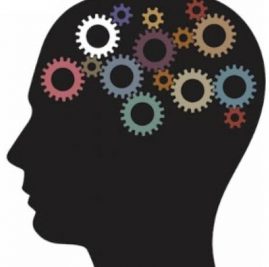Chronic pain is a medical condition that effects 25.3 million adults in the United States. It is characterized by persistent pain that continues beyond the time generally accepted as the appropriate healing time for a specific condition (International. Other sources might say if pain persists for three months or more. Chronic pain is the leading cause of disability, as well as the most commonly endorsed reason for accessing health care systems in the United States, with older individuals, females and non-Hispanic individuals at the greatest risk. Some forms of chronic pain may include: headaches, neck pain, back pain, spinal difficulties, or cancer related pain, fibromyalgia, and phantom pain, just to name a few.
Treating chronic pain can be challenging, time consuming, and even discouraging at times. It can be difficult to find pain specialists and pain is an extremely personal and subjective experience. Although treatment is not one-size-fits-all, there are many treatment options, including: medications, lifestyle changes, and psychotherapeutic interventions that can help.
But really, how can therapy help with this very physical problem?
The mind and body are closely connected. Alcoholic’s Anonymous uses the acronym HALT (Hungry, Angry, Lonely, Tired) to identify situations where one might be at greater risk of relapse. Similarly, the relatively new word “Hangry” describes when someone is irritable due to being hungry. Chronic pain is more persistent and complex than hunger, nonetheless, the physical sensations that we experience can impact our emotional experiences, and vice versa.
Individuals with chronic pain may be more likely to experiencing depression, anxiety, frustration, hopelessness and sleep disturbance and fatigue due to their pain. Approximately half of all individuals with chronic pain will experience depression. Furthermore, persistent pain can make every day tasks more challenging and factors such as stress can trigger or worsen pain. Individual’s with pain may experiences thought patterns that contribute to challenges with addressing pain. Some examples might include “I can’t go out anymore because I will definitely be in pain”, “I will be in pain forever”, “I never feel okay anymore”, or “I’m useless now that I can’t do the things I used to”. Therapy can help address these thought patterns, changes in mood and poor sleep. Therapy can also help individuals with incorporating positive heath behaviors that can reduce pain into one’s daily schedule (e.g. increasing physical activity, changing eating patterns, helping to identify strategies for remembering to take medication). There are even some therapeutic activities, such as progressive muscle relaxation or mindfulness practices, that can help relax one’s mind while simultaneously relaxing the body to reduce tension and pain.
If you or your loved one is struggling with chronic pains, there are many resources available to assist in the process of support and problem-solving, including professional counseling. To learn more, call (215) 487-1330 or email us at Greenridge@intercommunityaction.org for more information about our counseling services, which include one-on-one therapy with a trained clinician.
Author: Erin Hopkins Stern, M.A.
References
American Psychological Association (2013). Managing chronic pain: How psychologists can help with pain management. Retrieved from http://www.apa.org/helpcenter/pain-management.aspx
Castro, M., Kraychete, D., Daltro, C., Lopes, J., Menezes, R., & Oliveira, I. (2009). Comorbid anxiety and depression disorders in patients with chronic pain. Arquivos De Neuro-Psiquiatria, 67(4), 982-985. doi:10.1590/S0004-282X2009000600004
Garg R, Joshi S, Mishra S, Bhatnagar S. Evidence Based Practice of Chronic Pain. Indian Journal Of Palliative Care [serial online]. September 2012;18(3):155-161. Available from: CINAHL Plus, Ipswich, MA. Accessed April 29, 2017
International Association for the Study of Pain (2017). IASP taxonomy. Retrieved from https://www.iasp-pain.org/Education/Content.aspx?ItemNumber=1698
National Institute of Health (2010). NIH Fact Sheets: Pain Management. NIH. Retrieved from https://report.nih.gov/nihfactsheets/ViewFactSheet.aspx?csid=57
National Institute of health (2015) NIH analysis shows americans are in pain. Retrieved from https://nccih.nih.gov/news/press/08112015

